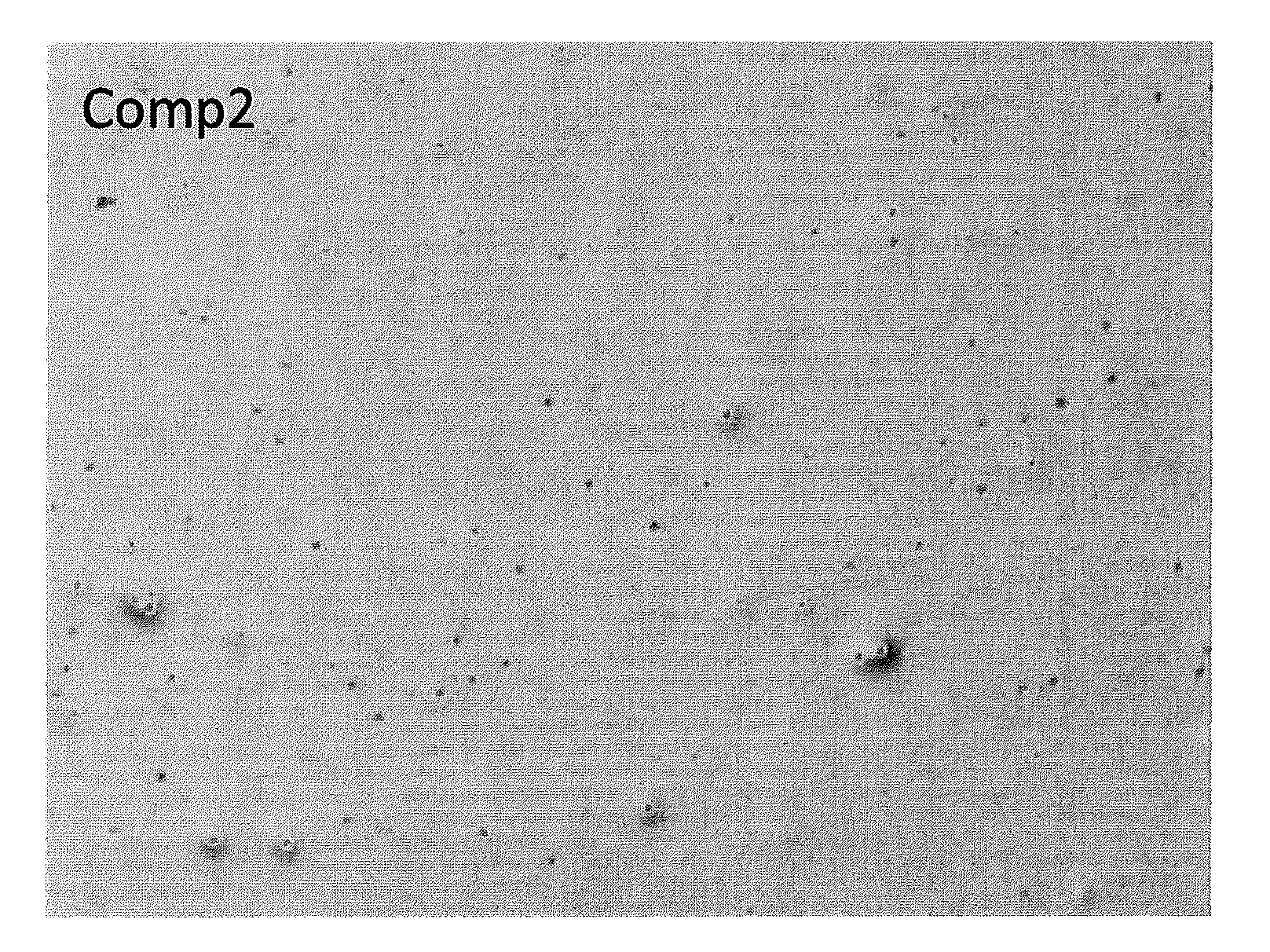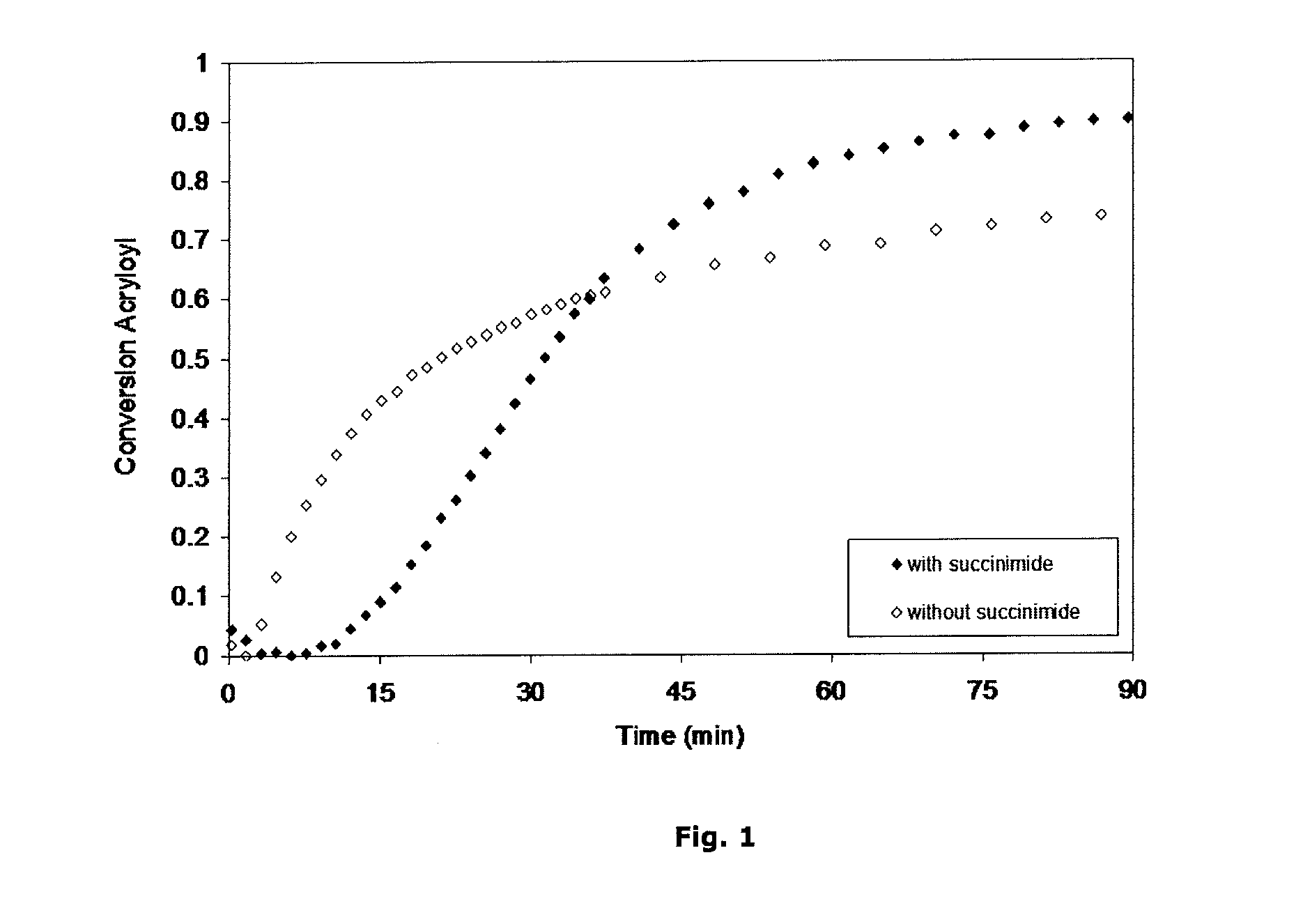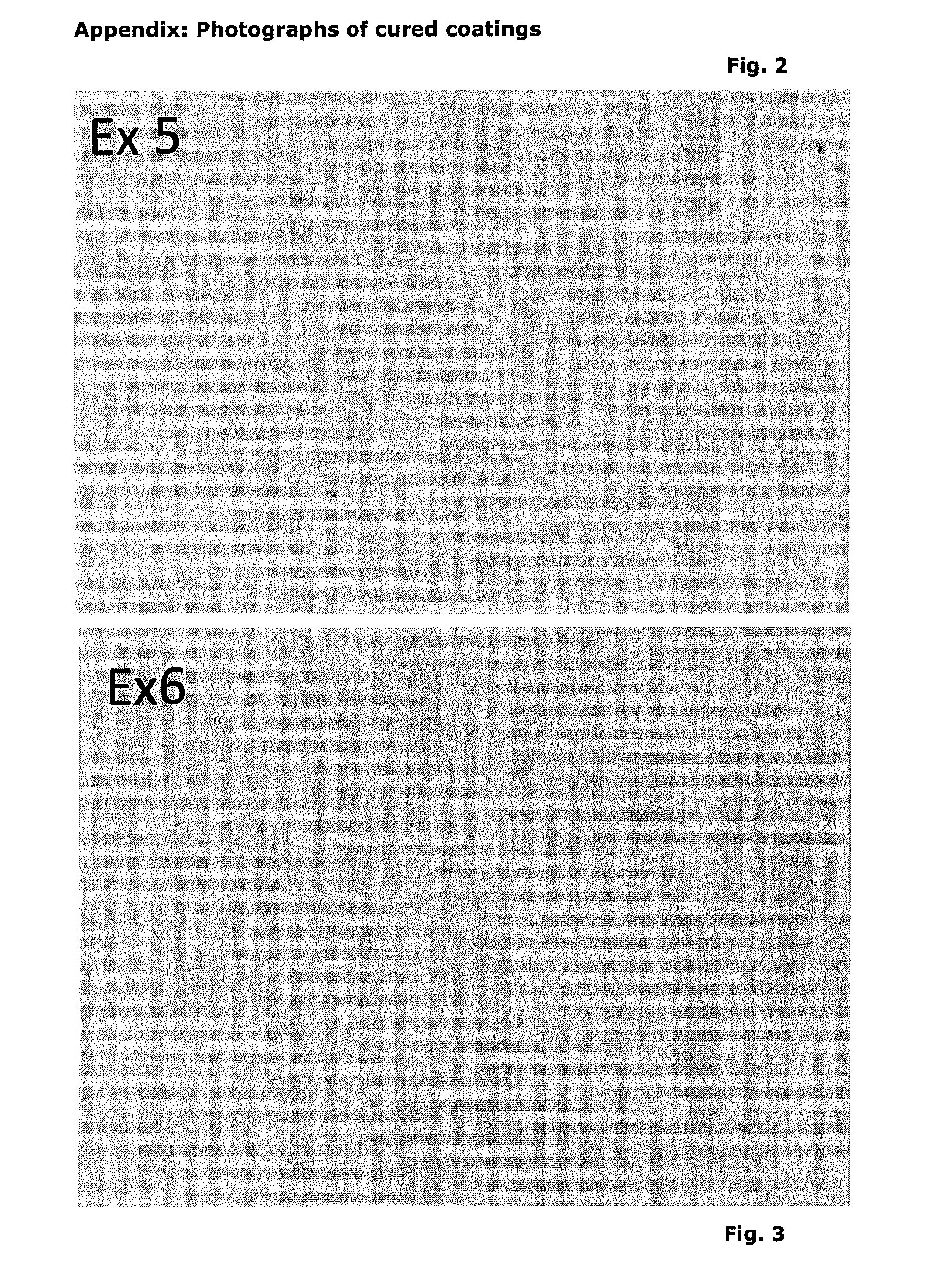Crosslinkable composition
a crosslinkable and composition technology, applied in the direction of organic compound/hydride/coordination complex catalysts, physical/chemical process catalysts, coatings, etc., can solve the problems of not being suitable for coating more complex irregular substrates, photo-latent amine catalysts that do generate strong bases on uv, etc., to achieve fast cure completion, high acidity, and quick hardness build up
- Summary
- Abstract
- Description
- Claims
- Application Information
AI Technical Summary
Benefits of technology
Problems solved by technology
Method used
Image
Examples
example 11
[0091]The conversion of the acryloyls in the system can be followed by FTIR, focusing on the 809 cm−1 band characteristic of the acryloyl. Doing that, the impact of added succinimide on total conversion can be made visible. Two systems were formulated (according to compositions of comparative example 1 (without succinimide) and example formulation 1 (with 150% succinimide relative to solids). FIG. 1 compares the conversion of these systems after application on top of an ATR crystal, the IR beam probing the deepest layers, close to the substrate. Initial conversion of the formulation without the succinimide is fast, which is also the cause for solvent entrapment and potential appearance problems. It can be seen that the addition of succinimide, even at these very low levels, leads to a significant retardation of the initial conversion; simultaneously, it illustrates that after this initial retardation period, the conversion rate is accelerating, so that t...
example 12
Determination of Michael Addition Reactivity of Succinimide
[0092]5 grams of succinimide (50.5 mmole) were dissolved in a mixture of 42 grams of butyl acrylate and 42 grams of methanol, and maintained at room temperature as such, or after adding a strong base (9.82 grams of a 1.12 meq / g solution of tetrabutylammonium hydroxide in methanol, 11 meq). Subsequently, the concentration of succinimide is determined as a function of time by taking samples, neutralizing with a known excess of HCl in water, and backtitration with a KOH solution. Without base initiation, no significant loss of succinimide N—H in this solution is observed in two weeks. With the base added, the succinimide concentration can be seen to decrease with time, as illustrated in the table F below. Succinimide concentration is expressed as % relative to the theoretical level based on used amounts.
TABLE FTime (min)Succinimide remaining (%)399308760771206018048
[0093]At this catalyst level ([succinimide] / [base]=5), it takes...
example 1
Preparation of Paint 1
[0109]Paint 1 was made by dispersing 91.44 g of Kronos 2310 in 43.85 g of Sartomer SR355 with the aid of 2.73 g of Disperbyk 163. To this were added 29.94 g of the resin A and 46.17 g of the resin B. Subsequently, 4.82 of Sartomer SR355 and 5.5 g of ethyl acetoacetate, 0.14 g of Byk 310 and 0.55 g of Byk 315 were added. The paint was finally diluted with 4.02 g of butylacetate and 9.37 g of methylethylketone. 11.58 g of catalyst solution C1 were stirred into 258.26 g of the paint 1. The mixture was sprayed on a 30×20 cm steel plate of 0.5 mm thickness tin plate into which were punched 12, 1 cm diameter holes, 2 cm apart. The paint was sprayed with increasing layer thickness. After spraying the panel was kept vertically. The paint could be sprayed up to 150 micron as a haze free fim without the production of tears on the borders of the holes.
PUM
| Property | Measurement | Unit |
|---|---|---|
| wt % | aaaaa | aaaaa |
| wt % | aaaaa | aaaaa |
| thickness | aaaaa | aaaaa |
Abstract
Description
Claims
Application Information
 Login to View More
Login to View More - R&D
- Intellectual Property
- Life Sciences
- Materials
- Tech Scout
- Unparalleled Data Quality
- Higher Quality Content
- 60% Fewer Hallucinations
Browse by: Latest US Patents, China's latest patents, Technical Efficacy Thesaurus, Application Domain, Technology Topic, Popular Technical Reports.
© 2025 PatSnap. All rights reserved.Legal|Privacy policy|Modern Slavery Act Transparency Statement|Sitemap|About US| Contact US: help@patsnap.com



